Introduction
Cairo in Egypt is a destination where ancient heritage and modern energy blend seamlessly. As the capital and largest city of Egypt, Cairo is often referred to as the “City of a Thousand Minarets” because of its breathtaking skyline filled with Islamic monuments. Stretching along the banks of the mighty Nile River, this bustling metropolis draws millions of travelers each year who come to admire its pharaonic treasures, medieval Islamic landmarks, and vibrant local culture.
Walking through Cairo feels like stepping into a living history book — one moment you’re gazing at the timeless pyramids, and the next you’re sipping tea in a lively market or admiring the city lights reflecting on the Nile. The city is both chaotic and charming, overwhelming yet captivating, making it an unforgettable stop for anyone exploring Egypt.
Historical Overview of Cairo
Founding and Early History
Although Egypt’s civilization dates back thousands of years, the city of Cairo itself was formally founded in 969 AD by the Fatimids. Its name, Al-Qāhirah, translates to “The Victorious.” However, settlements around present-day Cairo existed much earlier, including Memphis, Heliopolis, and Fustat, which all played important roles in Egypt’s political and cultural past.
From its earliest days, Cairo was more than just a seat of power — it became a center of Islamic scholarship, architecture, and governance. The establishment of mosques, palaces, and schools marked the beginning of its transformation into one of the most important cities of the medieval world.
Cairo Through the Ages
Cairo’s story reflects the many empires that shaped it. During the Mamluk era (13th–16th century), the city blossomed into a cultural and architectural jewel. Countless mosques and madrasas were constructed, earning Cairo its famous nickname.
Under Ottoman influence and later during British colonial rule, Cairo absorbed new layers of architecture and urban planning. Broad boulevards, gardens, and European-style buildings appeared alongside medieval monuments, creating the unique blend of East and West that characterizes Cairo today.
Modern Cairo
In the present day, Cairo has grown into a megacity of more than 20 million residents. It is the beating heart of Egypt, driving its economy, politics, and culture. Modern Cairo is a place of contrasts: glass skyscrapers rise next to centuries-old mosques, and lively cafés sit in the shadows of ancient citadels.
Despite the challenges of congestion and rapid urban expansion, the city maintains its charm. Cairo continues to be a gateway for travelers eager to explore Egypt’s past while experiencing the energy of a modern Middle Eastern capital.
Geographical Location and Climate
Location on the Nile River
Cairo is located on the eastern bank of the Nile River, just north of the fertile Nile Delta. The city’s growth and prosperity have always been tied to this river, which provided water, agriculture, and trade routes for thousands of years.
For today’s visitors, the Nile is one of Cairo’s greatest attractions. Tourists can enjoy felucca rides at sunset, luxury dinner cruises, or simply stroll along the Corniche, where the river offers a peaceful escape from the city’s busy streets.
Climate and Best Time to Visit
Cairo has a desert climate, with hot summers, mild winters, and abundant sunshine throughout the year.
-
Summer (May–September):
-
Temperatures often soar above 35°C (95°F).
-
Winter (November–February):
-
Cooler and more comfortable, with highs around 20°C (68°F).
-
Best Months to Visit:
-
October to April, when the weather is pleasant for sightseeing and outdoor activities.
Visitors during Ramadan, the holy month of fasting, will also experience Cairo’s unique festive atmosphere — lanterns lighting up streets, bustling night markets, and traditional foods served after sunset.
Cultural Significance
Cairo as the “City of a Thousand Minarets”
Cairo is globally recognized for its remarkable collection of Islamic architecture. The city’s skyline is adorned with mosques and minarets, many of which date back centuries. Landmarks such as the Mosque of Ibn Tulun, Al-Azhar Mosque, and the Mosque-Madrasa of Sultan Hassan stand as extraordinary examples of Islamic artistry.
These monuments reflect Cairo’s status as a spiritual and cultural capital of the Islamic world, with religious learning and architecture at its core.
Religious Importance
Cairo’s spiritual legacy is not confined to Islam. In Coptic Cairo, travelers can explore some of the oldest Christian churches in the world, including the Hanging Church. The Coptic Museum preserves artifacts from Egypt’s Christian heritage, while the Ben Ezra Synagogue stands as a reminder of the city’s Jewish history.
This blend of Islamic, Christian, and Jewish landmarks makes Cairo a city where multiple faiths have coexisted for centuries.
Literature, Art, and Film
Cairo has inspired generations of writers, artists, and filmmakers. Egyptian Nobel laureate Naguib Mahfouz often set his novels in Cairo, painting vivid pictures of everyday life. International films and documentaries frequently showcase the city’s unique atmosphere, from the Pyramids of Giza to the bustling markets.
The city also supports a thriving arts scene. Visitors can discover handmade crafts, calligraphy, jewelry, carpets, and contemporary art galleries that keep Cairo’s creative traditions alive.
Main Tourist Attractions in Cairo in Egypt
Cairo in Egypt is one of the world’s most remarkable travel destinations, thanks to its rich history and cultural treasures. The city is often described as an open-air museum, where ancient pharaohs, medieval Islamic rulers, and modern urban planners have all left their marks. Below are the must-visit attractions in Cairo, each offering a glimpse into the city’s timeless appeal.
The Pyramids of Giza and the Sphinx
The Giza Plateau is Cairo’s most iconic destination and home to the legendary Pyramids of Giza, the only surviving wonder of the Seven Wonders of the Ancient World.
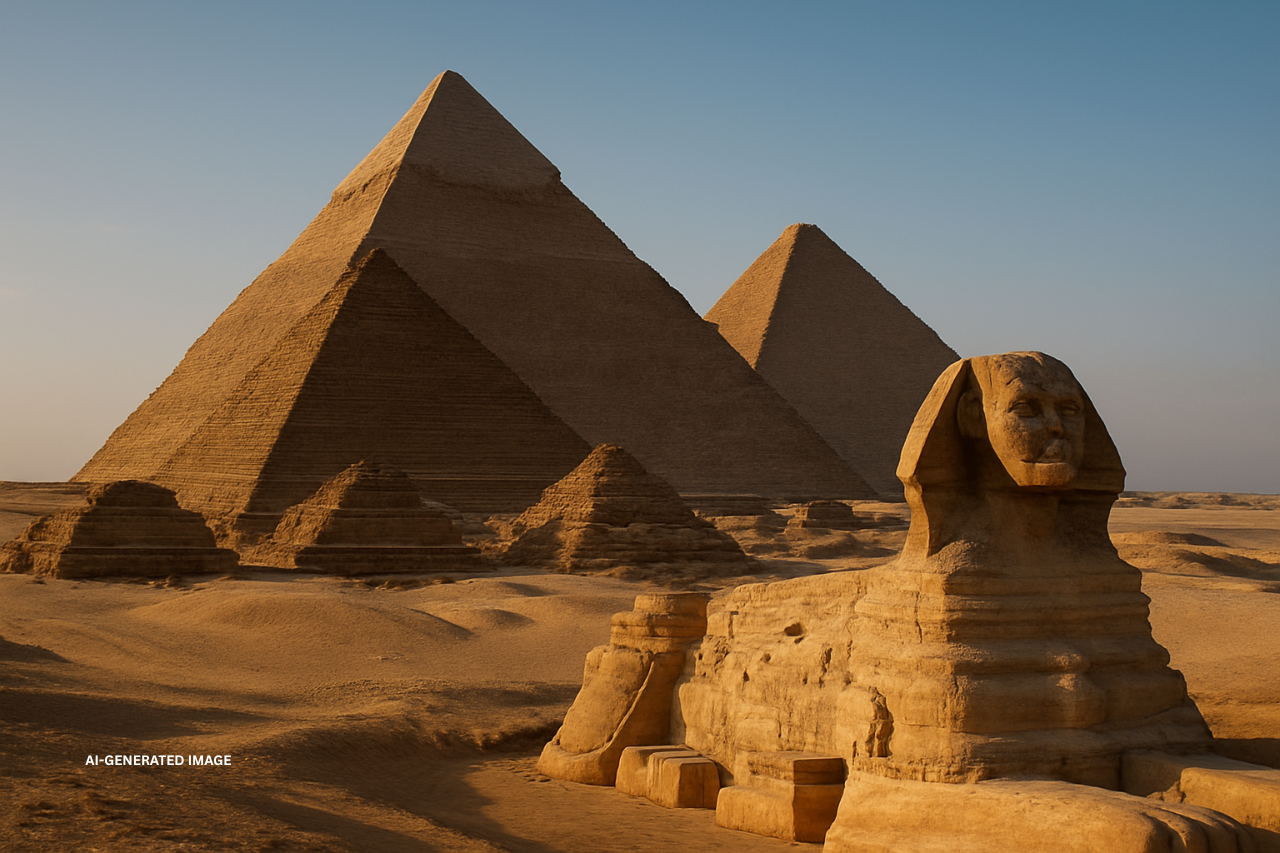
-
The Great Pyramid of Khufu remains a breathtaking achievement in ancient engineering, originally standing at 146 meters.
-
The neighboring pyramids of Khafre and Menkaure complete the site, each showcasing impressive architectural design.
-
Standing guard nearby is the Great Sphinx, with the body of a lion and the head of a pharaoh, symbolizing strength and wisdom.
Today, visitors can explore the pyramid interiors, ride camels across the desert, or attend the evening Sound and Light Show, which narrates Egypt’s history with dramatic visuals.
Travel Tip: Visit early in the morning or later in the afternoon to avoid crowds and midday heat. Always negotiate prices for camel or horse rides.
The Egyptian Museum
In Tahrir Square, the Egyptian Museum of Antiquities offers an extraordinary collection of artifacts that bring Egypt’s history to life. Housing more than 120,000 treasures, it is one of the most important museums in the world.
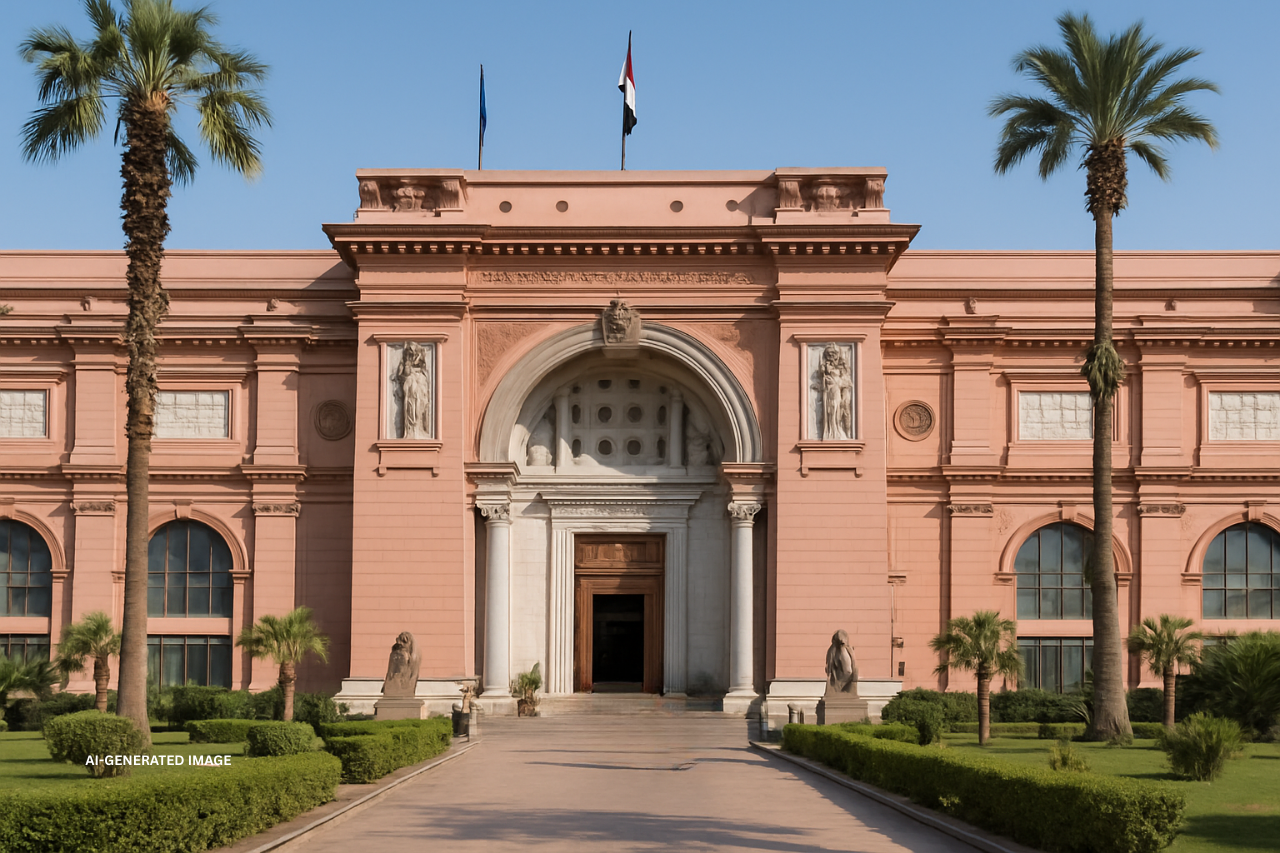
Highlights include:
-
The golden mask of Tutankhamun and his elaborate burial collection
-
Ancient mummies of pharaohs, remarkably well preserved
-
Jewelry, papyrus scrolls, and relics spanning thousands of years
With the upcoming opening of the Grand Egyptian Museum (GEM) near Giza, many of these artifacts will soon be displayed in a new state-of-the-art facility, making Cairo an even greater hub for archaeology enthusiasts.
Travel Tip: Hiring a knowledgeable guide helps visitors better understand the vast collection and the stories behind it.
Islamic Cairo
The district known as Islamic Cairo is a UNESCO World Heritage site filled with mosques, madrasas, and lively markets that illustrate the glory of medieval Cairo.
The Citadel of Saladin
Built in the 12th century as a fortress to defend the city, the Citadel is now one of Cairo’s most visited landmarks. Inside, the Mosque of Muhammad Ali dominates the skyline with its Ottoman-style domes and offers panoramic views of the city.
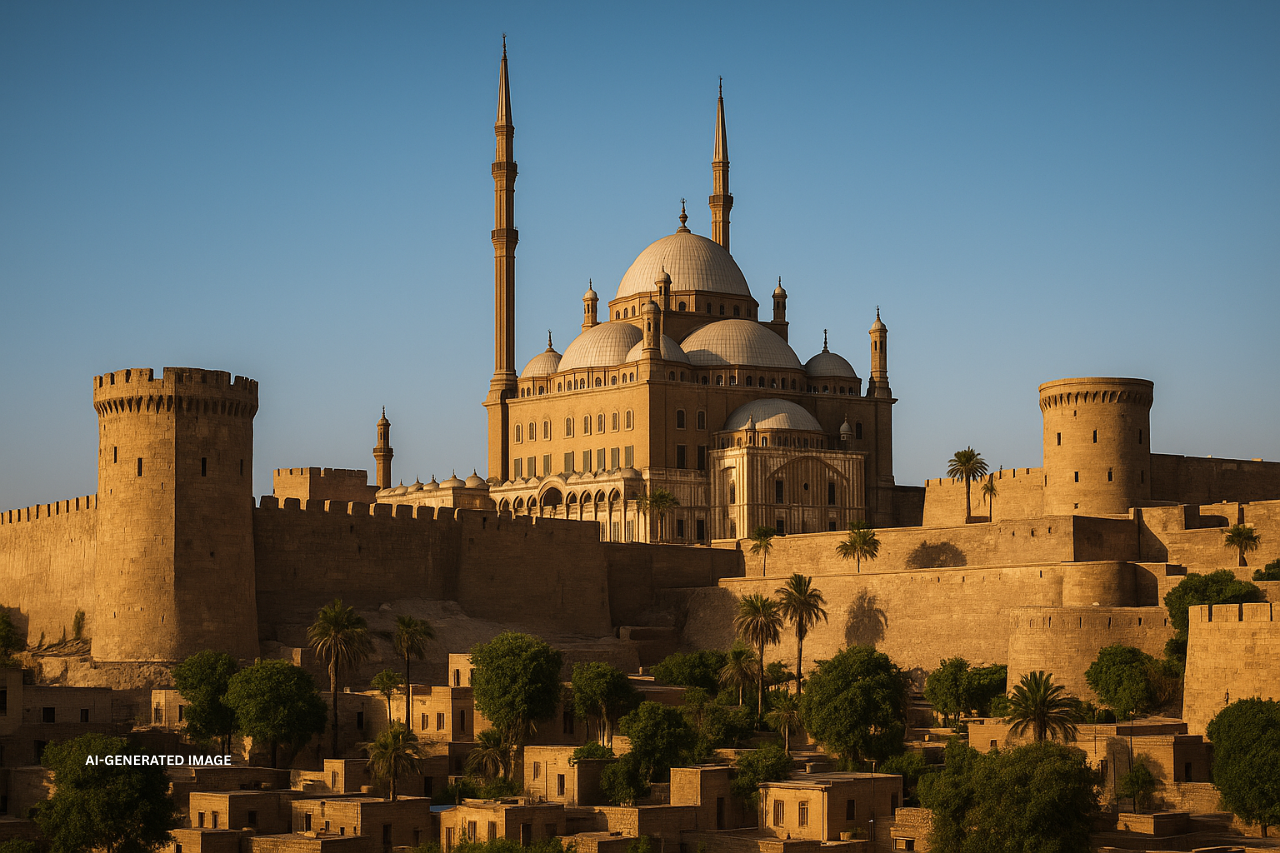
Al-Azhar Mosque
Founded in 972 AD, Al-Azhar Mosque is not only a sacred place of worship but also the seat of Al-Azhar University, one of the world’s oldest institutions of Islamic learning.
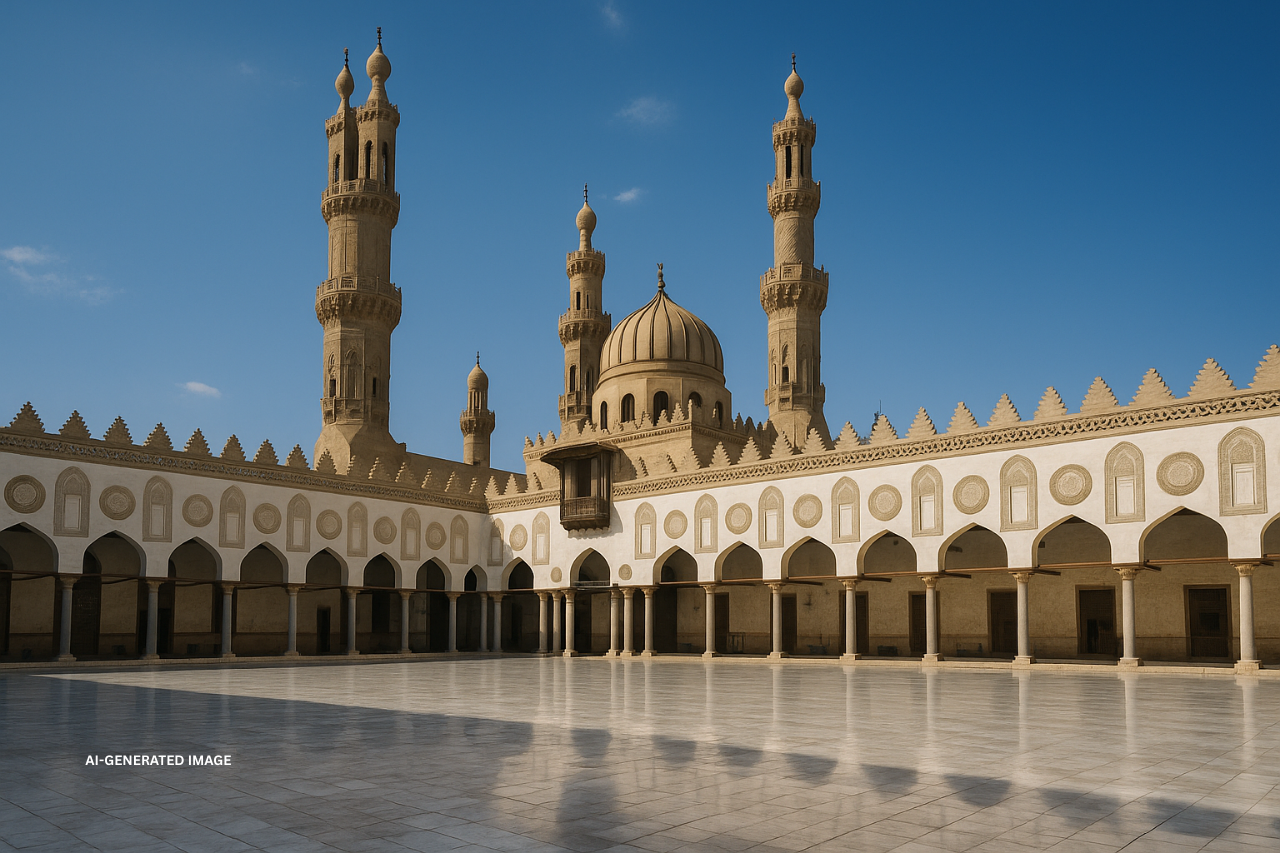
Mosque-Madrasa of Sultan Hassan
This 14th-century mosque is considered a masterpiece of Mamluk architecture, renowned for its towering minarets, vast courtyard, and detailed stonework.
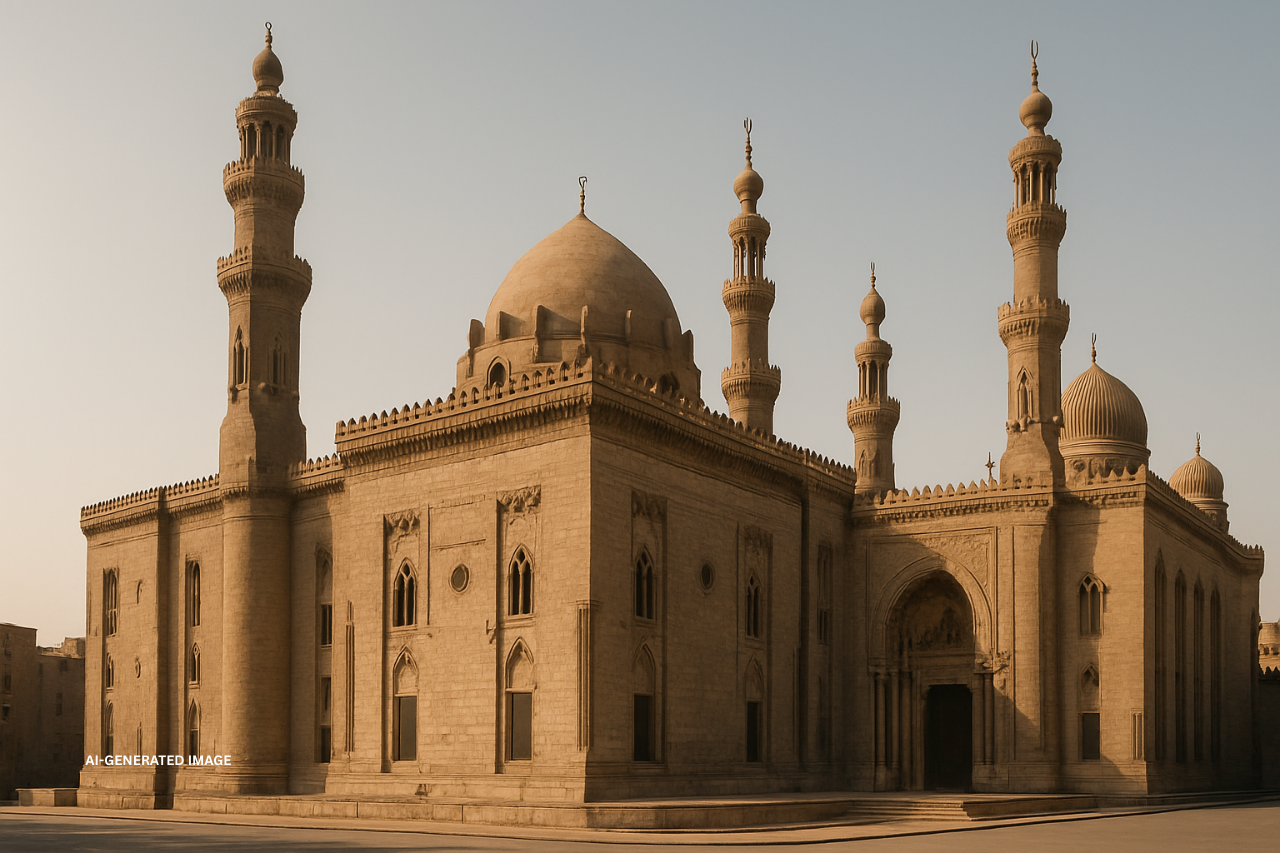
Khan El Khalili Bazaar
Perhaps Cairo’s most famous market, Khan El Khalili, is a maze of shops selling spices, lanterns, jewelry, carpets, perfumes, and souvenirs. The lively atmosphere, with vendors calling out to passersby, is just as memorable as the goods themselves.
Travel Tip: Bargaining is customary. Start at a lower price and enjoy the experience as part of the local culture.
Coptic Cairo
Coptic Cairo offers insight into Egypt’s Christian and Jewish heritage, with religious sites dating back centuries.
The Hanging Church (Saint Virgin Mary’s Church)
Built above the remains of a Roman gatehouse, the Hanging Church is one of Egypt’s oldest and most revered Coptic churches. Inside are beautifully carved wooden panels and ancient religious icons.
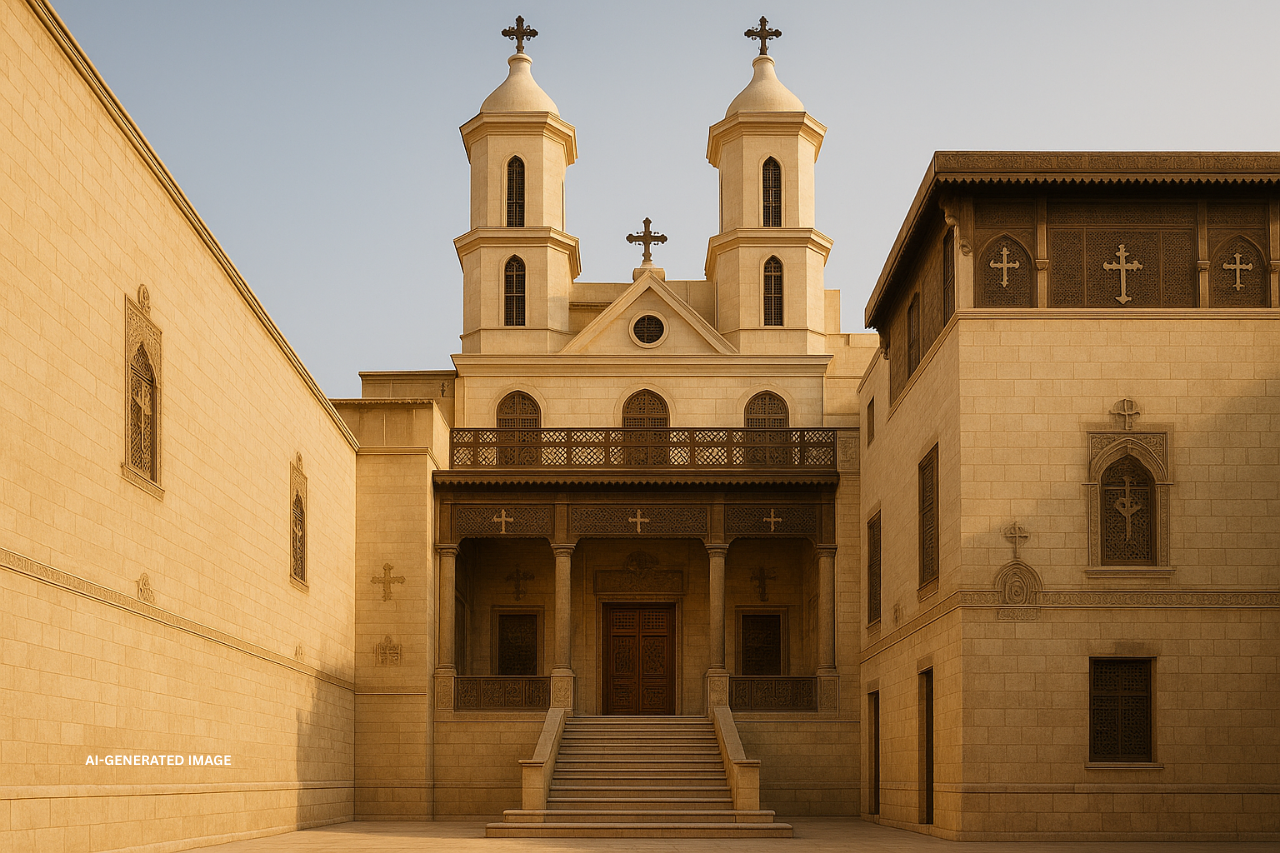
The Coptic Museum
This museum houses an impressive collection of manuscripts, textiles, and art that showcase the fusion of Egyptian, Greek, and Roman influences in early Christianity.
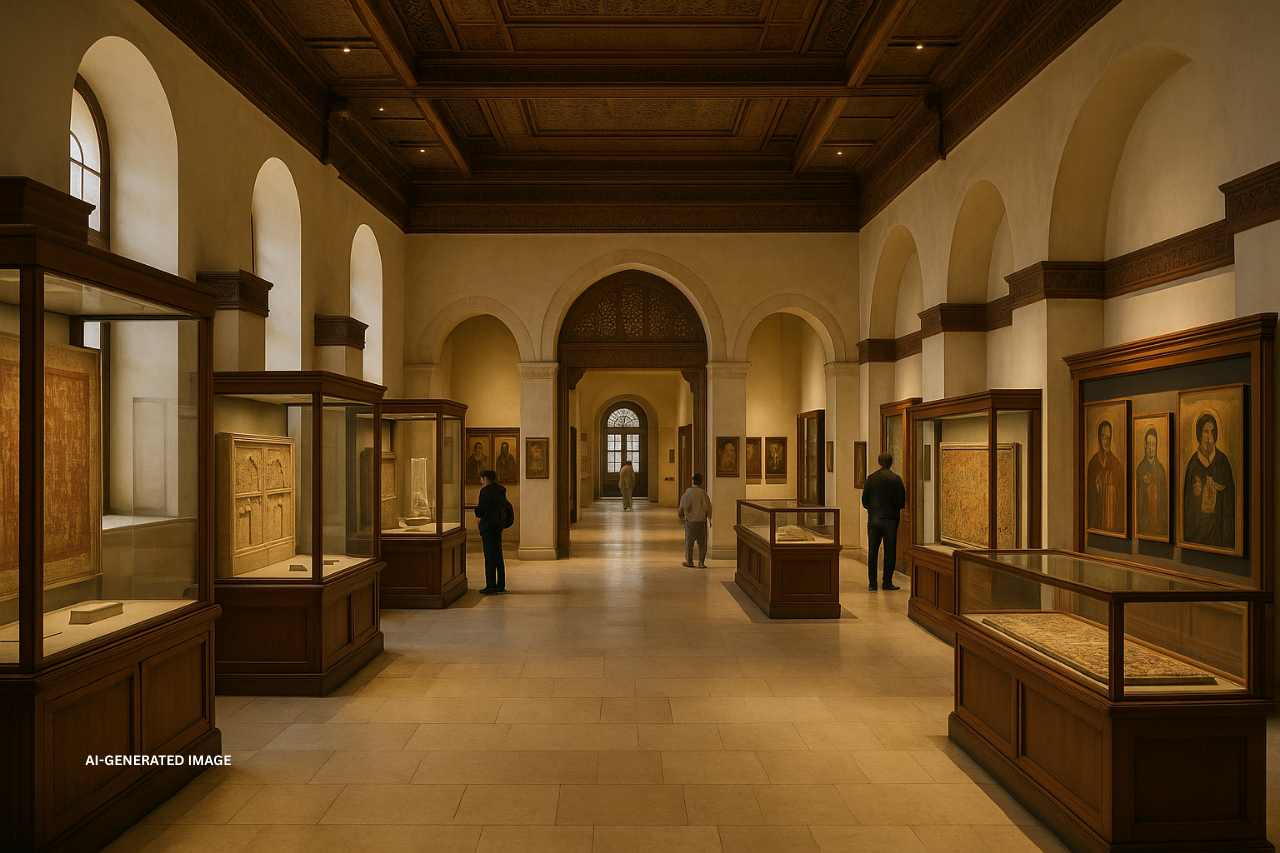
Ben Ezra Synagogue
Traditionally believed to be built on the spot where baby Moses was found in the Nile, this historic synagogue is an important reminder of Cairo’s Jewish community.
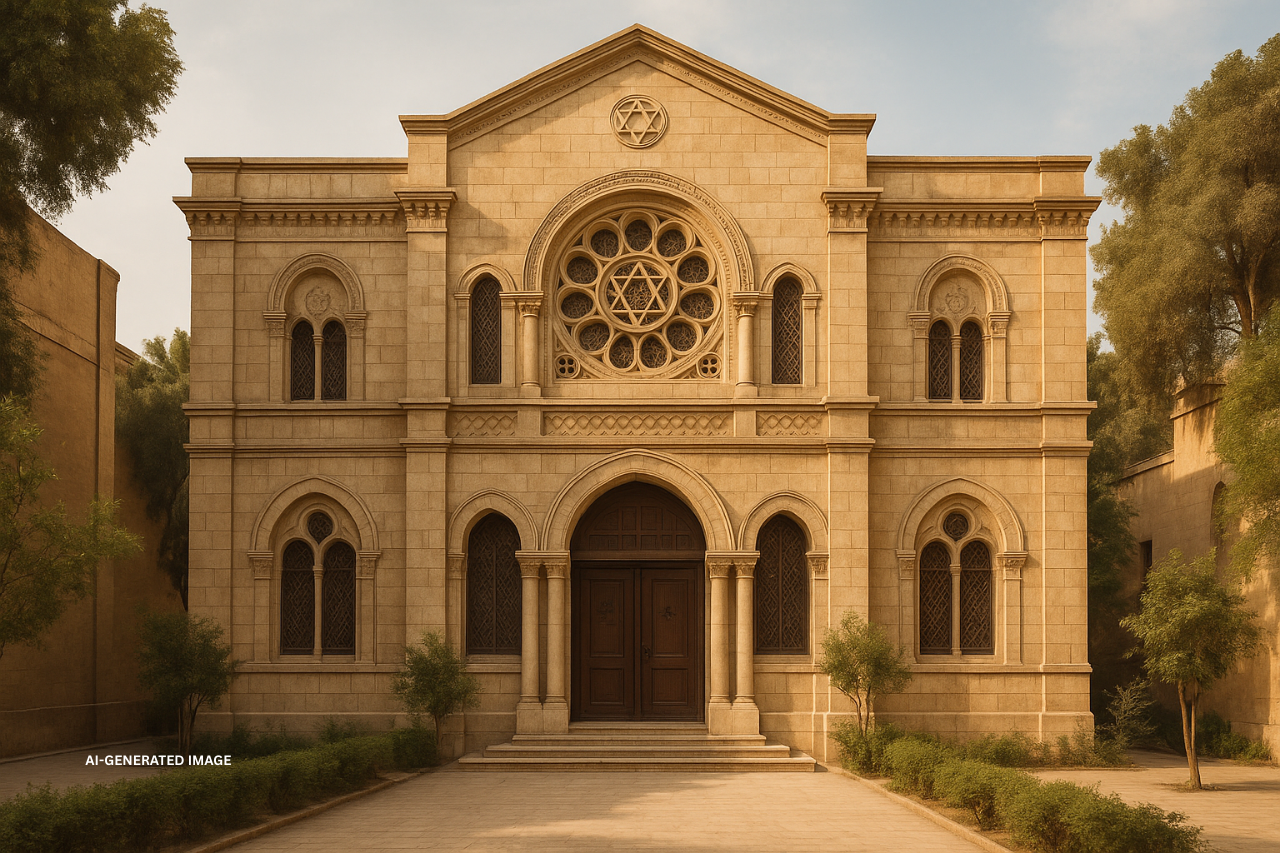
Travel Tip: Dress modestly when visiting these sites, and check photography rules, as some locations may restrict it.
Nile River Experiences
The Nile River has always been Cairo’s lifeline, and exploring it is one of the most enjoyable ways to see the city.
Felucca Rides
Traditional wooden sailboats, known as feluccas, provide peaceful rides on the Nile. They are especially popular at sunset, offering a tranquil escape from the city’s busy streets.
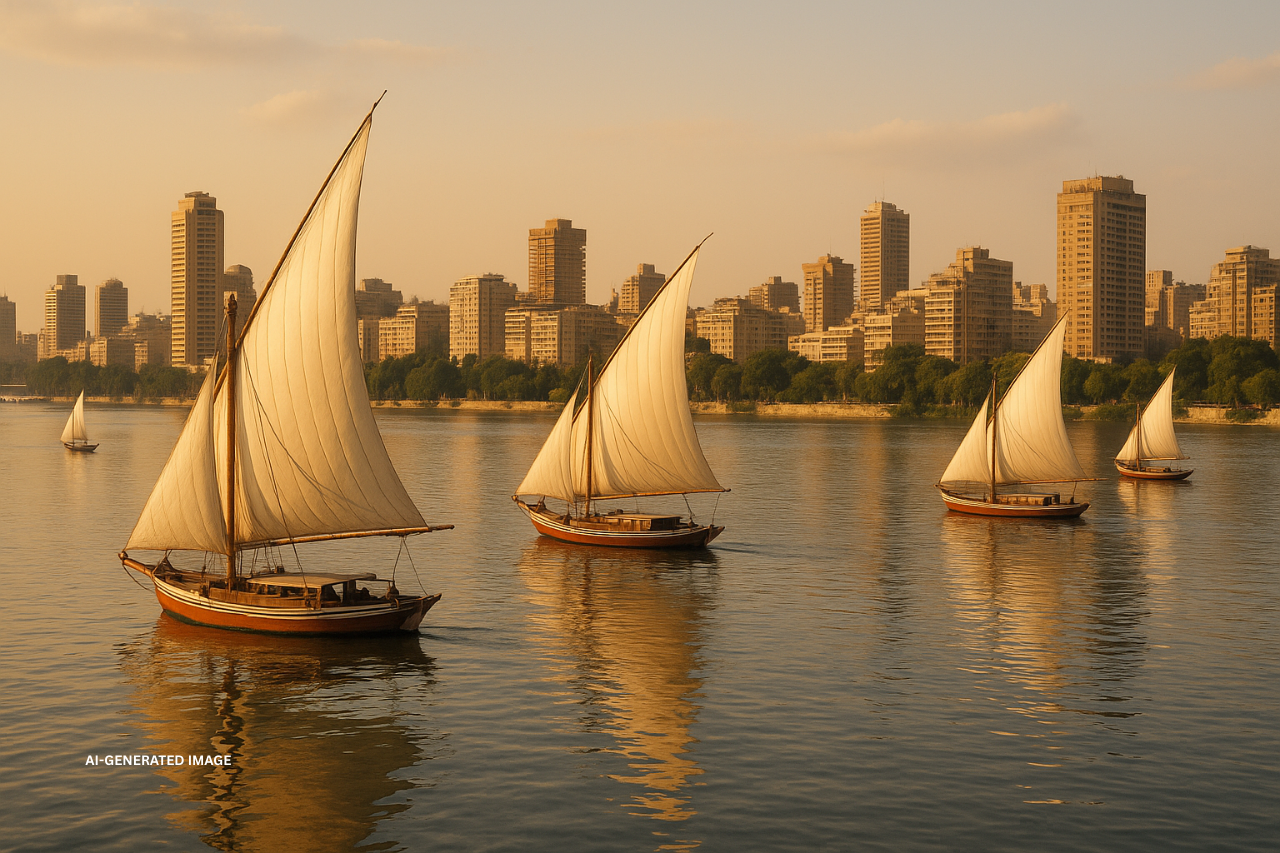
Dinner Cruises
Luxury boats on the Nile feature dinner cruises with Egyptian buffets, live entertainment, and traditional music or dance shows. This is a unique way to admire Cairo illuminated at night.
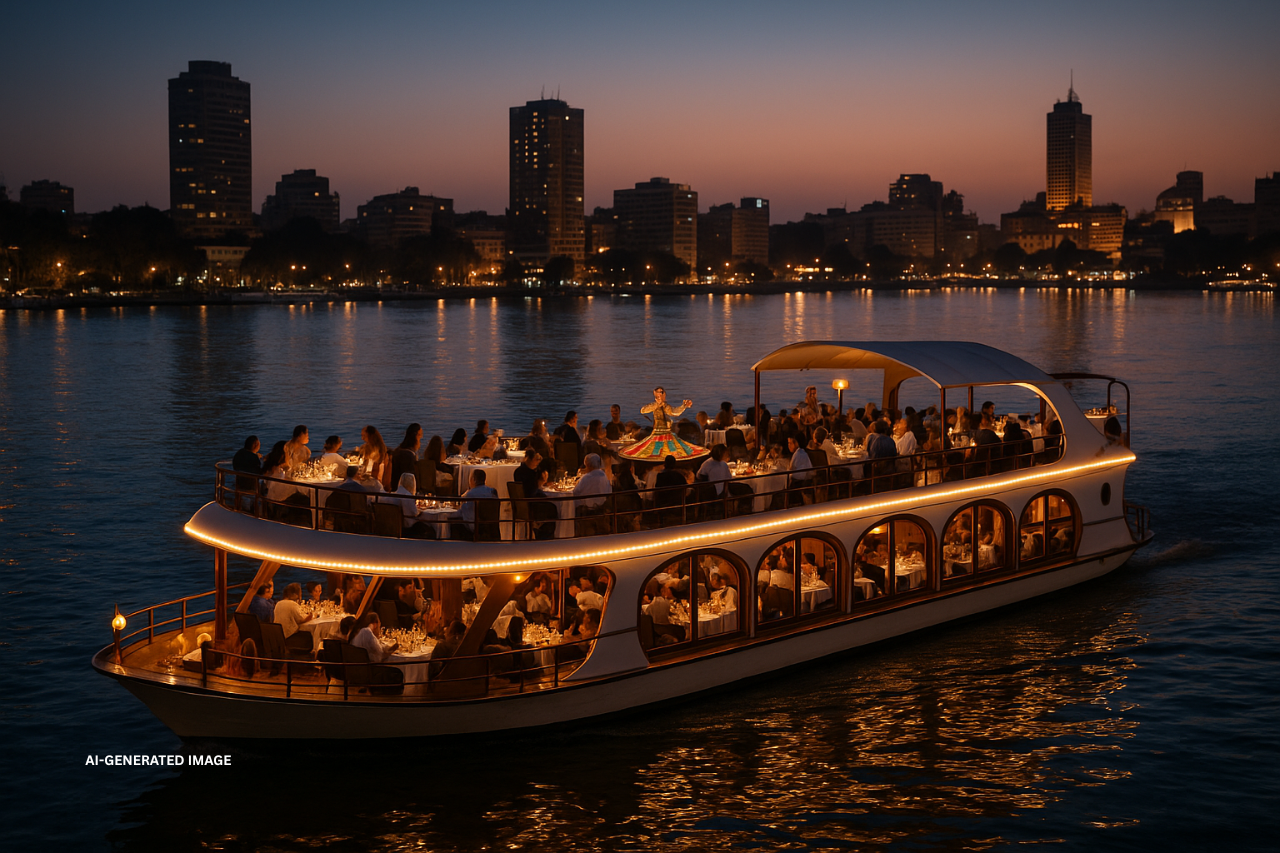
Travel Tip: Book tickets in advance during peak tourist seasons, particularly for cruises with cultural performances.
Modern Highlights
While Cairo is celebrated for its ancient history, its modern attractions are also worth exploring.
Cairo Tower
Standing at 187 meters on Gezira Island, the Cairo Tower offers panoramic views of the city and the Nile. Visitors can also dine in its revolving restaurant.
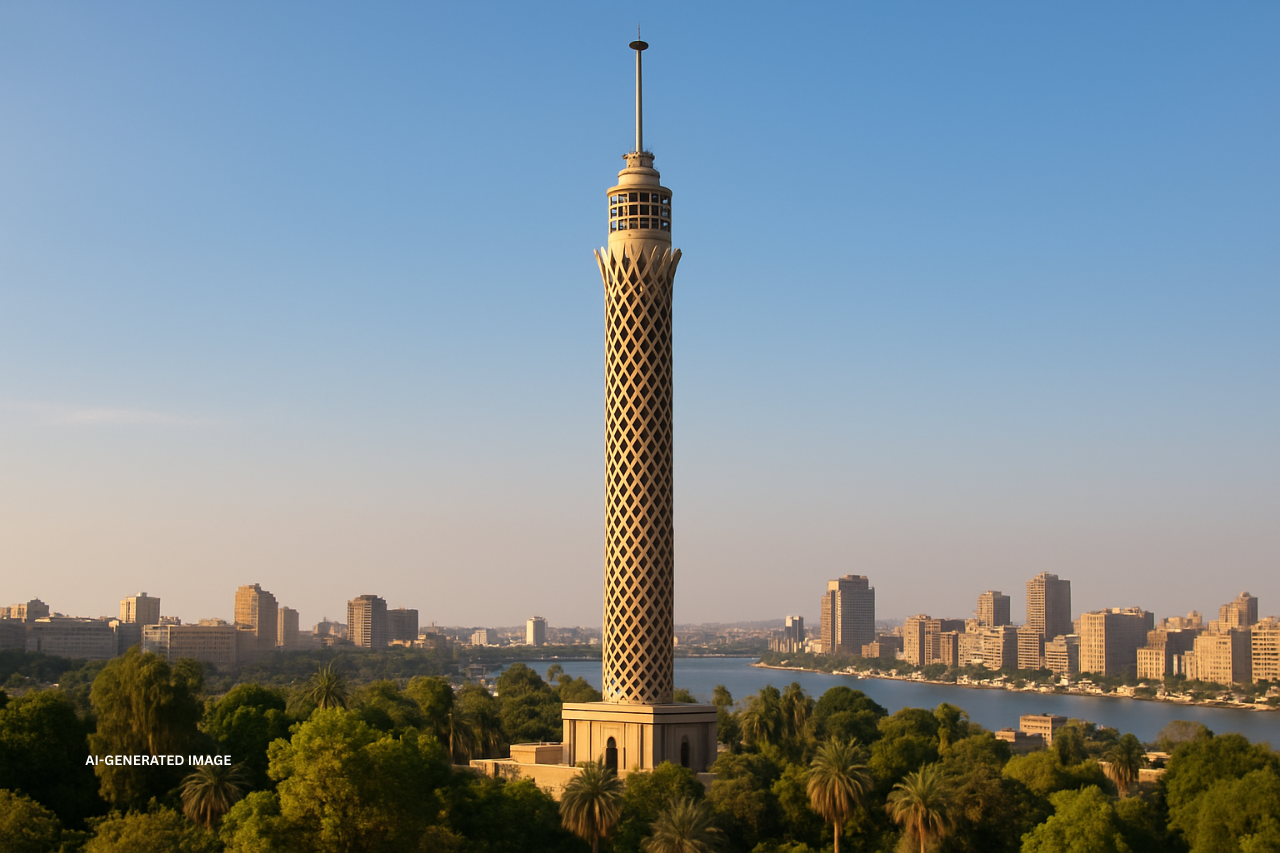
Tahrir Square
A symbol of modern Egypt, Tahrir Square has played a central role in the country’s political life. Today, it remains a busy hub surrounded by important government buildings and cultural institutions.
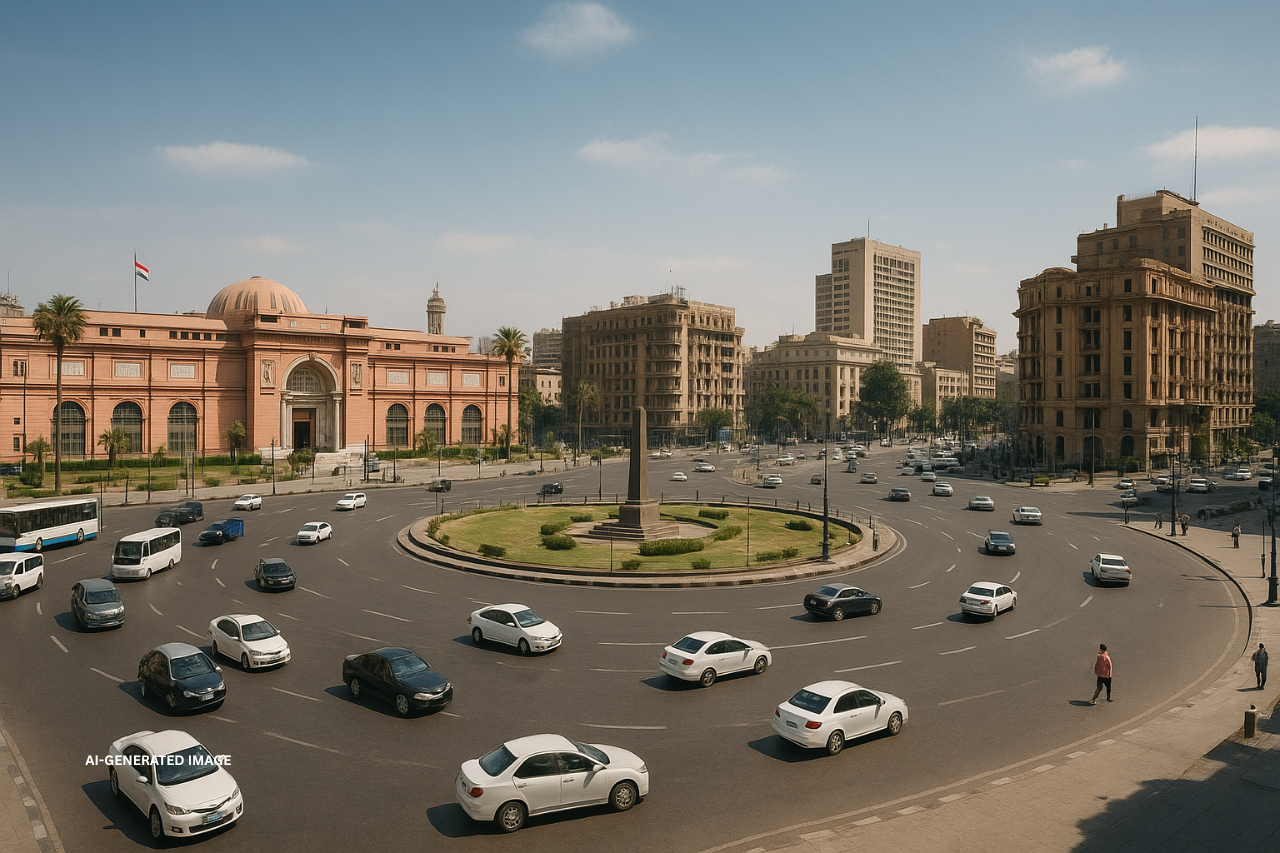
Opera House and Cultural Venues
The Cairo Opera House is the city’s premier performing arts venue, hosting concerts, ballets, and plays. In addition, art galleries and cultural centers across Cairo showcase the works of contemporary Egyptian artists.
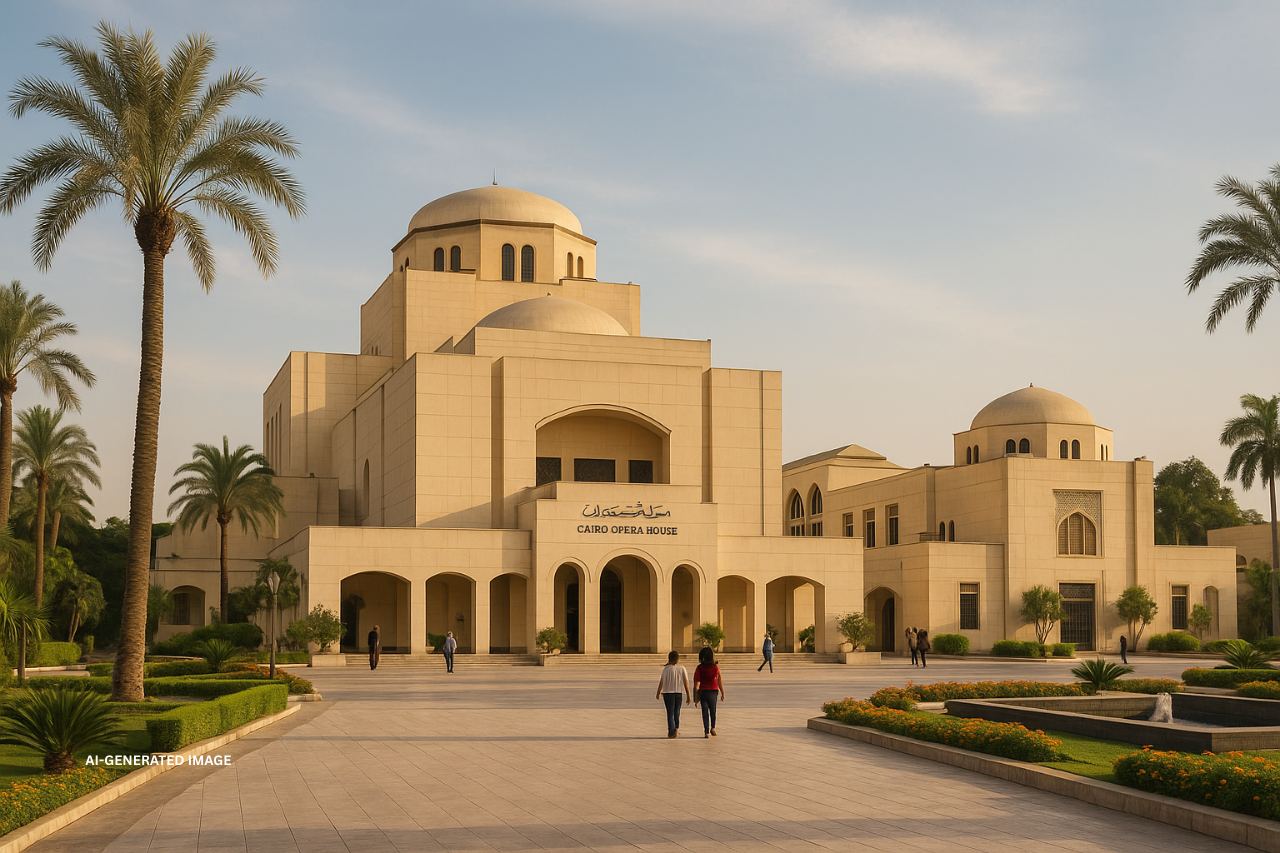
Summary
The attractions of Cairo in Egypt range from world-famous monuments like the pyramids to the hidden treasures of Islamic and Coptic Cairo. Add to that the unforgettable Nile experiences and contemporary landmarks such as Cairo Tower, and it becomes clear why the city remains one of the most fascinating destinations in the world. Each site reveals a chapter of Cairo’s remarkable story — a story of continuity, culture, and diversity.
Neighborhoods and Districts
Downtown Cairo
Known as Wust al-Balad, Downtown Cairo is the heart of the modern city. Developed during the 19th and early 20th centuries, it was heavily influenced by European planning, giving it the nickname “Paris on the Nile.”
-
The district features broad boulevards, neoclassical buildings, and lively squares.
-
It is home to Tahrir Square, historic hotels, and cultural landmarks.
-
Cafés, bookshops, and street vendors give the area a lively, authentic character.
Downtown Cairo also attracts budget travelers with its hostels and guesthouses located near major attractions.
Zamalek
Zamalek, situated on Gezira Island in the Nile, is one of Cairo’s most stylish and tranquil neighborhoods.
-
It is home to embassies, art galleries, and cultural centers, giving it an international atmosphere.
-
The district includes the Cairo Opera House, boutique shops, and chic cafés.
-
Green streets and riverside views make it a favorite among expatriates and affluent locals.
Zamalek is ideal for those seeking a mix of cultural experiences and modern comfort.
Old Cairo
Old Cairo, or Masr al-Qadima, reveals the city’s earliest roots.
-
It includes Coptic Cairo, with its historic churches, ruins, and museums.
-
Narrow lanes and ancient buildings create a sense of stepping back in time.
-
The area is a key destination for visitors interested in Cairo’s religious and cultural history.
New Cairo and Heliopolis
Cairo’s modern expansion is reflected in New Cairo and Heliopolis.
-
New Cairo is known for its gated communities, shopping malls, and universities.
-
Heliopolis, founded in the early 20th century, is admired for its wide avenues and distinctive architecture.
-
Both areas are popular with families, students, and professionals seeking a quieter lifestyle.
These districts highlight the city’s contemporary side while remaining connected to its historic core.
Food and Culinary Scene
Cairo in Egypt is a paradise for food lovers, offering a mix of traditional Egyptian dishes, street snacks, and international dining options. Egyptian cuisine is hearty, flavorful, and built on fresh ingredients with aromatic spices.
Traditional Egyptian Dishes to Try
Visitors should not miss Cairo’s signature dishes:
-
Koshari:
-
A mix of rice, pasta, lentils, chickpeas, tomato sauce, and crispy onions.
-
Ful Medames:
-
A beloved breakfast made with mashed fava beans, olive oil, garlic, and lemon.
-
Molokhia:
-
A green soup prepared from jute leaves, often served with chicken or rabbit.
-
Mahshi:
-
Vegetables like zucchini and bell peppers are stuffed with seasoned rice.
-
Shawarma and Ta’ameya:
-
Popular street foods: ta’ameya is Egypt’s version of falafel, made with fava beans.
Street Food Culture
Street food is a big part of daily life in Cairo.
-
Baladi bread, a traditional flatbread, accompanies most meals.
-
Vendors sell fresh juices such as sugarcane, hibiscus, and tamarind.
-
Grilled meats, kebabs, and ta’ameya sandwiches are affordable and filling.
Eating street food in Cairo offers both flavor and a glimpse into the city’s everyday culture.
Fine Dining and International Cuisine
Cairo also caters to those seeking fine dining.
-
Luxury hotels along the Nile feature gourmet restaurants with international menus.
-
Upscale districts like Zamalek and Heliopolis are full of restaurants serving cuisines from around the world.
-
Riverside dining allows guests to enjoy local dishes while taking in stunning views of the Nile.
This balance of street food and elegant dining shows Cairo’s blend of tradition and modernity.
Arts, Festivals, and Entertainment
Cairo is not just about monuments; it is also a cultural capital full of art, music, and festivals.
Cairo International Film Festival
Since 1976, the Cairo International Film Festival has drawn filmmakers and stars from around the globe, making it one of the most prestigious cultural events in the Arab world.
Religious and Cultural Festivals
-
Ramadan:
-
Streets are lit with lanterns, families gather for nightly feasts, and markets come alive after sunset.
-
Eid celebrations:
-
Marked by prayers, family gatherings, and festive meals.
-
Coptic Christmas (January 7):
-
Celebrated with church services and traditional foods.
These festivals highlight Cairo’s diverse religious traditions and cultural unity.
Music, Dance, and Theatre
-
Cairo is renowned for traditional music and dance, especially belly dancing.
-
The oud (lute) and tabla (drum) play a central role in Egyptian music.
-
The Cairo Opera House showcases ballet, orchestras, and plays, while art galleries across the city promote contemporary artists.
Shopping
Shopping in Cairo is both practical and cultural, offering traditional markets and modern malls.
Traditional Bazaars and Souks
The most famous is Khan El Khalili Bazaar, where visitors can find:
-
Spices and perfumes
-
Handcrafted lamps and lanterns
-
Carpets, brassware, and jewelry
-
Papyrus art and other souvenirs
The bazaar is a sensory experience — a place of vibrant colors, aromas, and sounds.
Modern Shopping Malls
For a contemporary shopping experience, Cairo has many large malls, including:
-
Cairo Festival City Mall
-
City Stars Mall
-
Mall of Arabia
These complexes combine shopping with entertainment, dining, and cinemas, appealing to families and younger travelers.
Souvenirs and Handicrafts
Cairo offers countless unique souvenirs:
-
Papyrus paintings with pharaonic designs
-
Perfume oils crafted from natural essences
-
Handwoven rugs and textiles
-
Silver jewelry decorated with Egyptian motifs
These items capture Cairo’s craftsmanship and cultural identity, making them perfect keepsakes.
Summary
Cairo in Egypt is more than just a historical city. Its neighborhoods reflect different lifestyles, its cuisine celebrates tradition and creativity, its festivals showcase unity and culture, and its markets highlight both heritage and modernity. Together, these elements bring the soul of Cairo to life, making the city unforgettable for every traveler.
Accommodation
Cairo in Egypt offers a diverse range of accommodations, from world-class luxury hotels to budget-friendly guesthouses. Whether travelers want to enjoy pyramid views, stay in a historic district, or experience modern neighborhoods, there is an option for every preference and budget.
Luxury Hotels
Some of the finest hotels in the Middle East are located in Cairo.
-
Marriott Mena House:
-
Famous for its incredible views of the Pyramids of Giza.
-
The Nile Ritz-Carlton:
-
Located in Tahrir Square, ideal for those who want to stay in the center of the action.
-
Four Seasons Cairo at Nile Plaza:
-
A luxurious retreat with fine dining, spa services, and elegant suites.
These hotels combine Egyptian charm with international luxury standards, making them perfect for high-end travelers.
Budget and Mid-Range Options
Cairo is also very welcoming to budget travelers.
-
Downtown Cairo is full of mid-range hotels and hostels, many within walking distance of cultural attractions.
-
Family-run guesthouses in Old Cairo provide a cozy, authentic atmosphere.
-
Backpacker hostels near Tahrir Square are popular among students and younger visitors.
Unique Stays
For travelers looking for something different:
-
Floating hotels on the Nile combine scenic river views with comfortable accommodations.
-
Boutique stays in Zamalek offer a quieter environment with an artistic touch.
-
Airbnb rentals in New Cairo and Heliopolis provide modern amenities with a local flavor.
Transportation
As a megacity of over 20 million people, Cairo can be hectic to navigate, but it offers multiple transportation options to suit different needs.
Getting Around the City
-
Metro:
-
The Cairo Metro is fast, inexpensive, and connects major neighborhoods.
-
Taxis and Ride-Hailing Apps:
-
White taxis are widely available, though bargaining is often necessary. Services like Uber and Careem provide more reliable pricing.
-
Buses and Microbuses:
-
Affordable but usually crowded and less convenient for tourists.
-
Walking:
-
Best for Downtown and historic districts, though heavy traffic makes it challenging in some areas.
Cairo International Airport
Located about 22 kilometers from the city center, Cairo International Airport is Egypt’s busiest airport and the main entry point for international visitors. Travelers can reach the city by taxi, shuttle bus, or ride-hailing services.
Day Trips from Cairo
Cairo also serves as a convenient base for short trips.
-
Memphis and Saqqara:
-
Explore the Step Pyramid of Djoser and ancient necropolises.
-
Dahshur:
-
Visit the Red Pyramid and the Bent Pyramid.
-
Alexandria:
-
A historic Mediterranean city reachable within a few hours by train or bus.
Travel Tips
Safety and Security
Cairo is generally safe, but like any large city, it is important to be cautious.
-
Stick to crowded, well-lit areas at night.
-
Watch out for pickpockets in busy places.
-
Use reputable guides and licensed taxis or ride-hailing services.
Cultural Etiquette
Respecting local traditions makes travel smoother.
-
Dress modestly when visiting mosques and churches.
-
Greetings such as “Salam Alaikum” are polite and appreciated.
-
Always ask before taking photos of locals.
Money, SIM Cards, and Connectivity
-
The currency is the Egyptian Pound (EGP).
-
ATMs are widely available, but cash is useful in markets.
-
Purchasing a local SIM card at the airport ensures affordable internet and calls.
Language and Communication
-
Arabic is the official language, but English is commonly spoken in tourist areas.
-
Learning a few basic Arabic phrases adds friendliness to interactions.
Cairo’s Role in Egypt’s Economy and Modern Identity
Political Importance
As the capital, Cairo is the center of political power. It houses the government, embassies, and international organizations that influence the country’s direction.
Business and Commerce
Cairo is Egypt’s economic powerhouse, driving trade, finance, and industry.
-
Key sectors include textiles, construction, tourism, and technology.
-
New Cairo has become a hub for startups and modern businesses.
Education and Institutions
Cairo is also Egypt’s leading center of education.
-
Al-Azhar University:
-
One of the world’s oldest and most respected Islamic universities.
-
Cairo University:
-
A leading academic institution with diverse programs.
-
Numerous international schools and cultural institutions enhance Cairo’s global profile.
Conclusion
Cairo in Egypt is a destination where ancient wonders and modern life converge. From the majestic Pyramids of Giza and the treasures of the Egyptian Museum to the bustling Khan El Khalili Bazaar and tranquil Nile cruises, Cairo offers something for every traveler.
The city’s charm lies in its contrasts: historic and modern, sacred and lively, chaotic and beautiful. A journey to Cairo is more than sightseeing — it is an experience that connects visitors to one of the world’s greatest civilizations while immersing them in the energy of a thriving modern metropolis.
FAQs
What is the best time to visit Cairo?
From October to April, when the weather is mild and suitable for outdoor activities.
How many days should I spend in Cairo?
At least 3 to 4 days are recommended to cover the highlights, but longer stays allow for deeper exploration.
Is Cairo safe for tourists?
Yes, though visitors should stay aware of their surroundings and avoid unlicensed taxis.
What should I wear when visiting religious sites?
Modest clothing is best. Women should cover their shoulders and knees, while men should avoid shorts.
What foods should I try in Cairo?
Local favorites include Koshari, Ful Medames, Molokhia, and Ta’ameya.
Can I see the pyramids on a day trip from Cairo?
Yes, the Pyramids of Giza are only about 30 minutes from central Cairo.
What are the best neighborhoods to stay in?
Zamalek, Downtown, and New Cairo are popular for their unique atmospheres.
What souvenirs are worth buying?
Papyrus paintings, spices, perfumes, carpets, and silver jewelry are excellent choices.
Do I need a guide to explore Cairo?
Not required, but guides enrich the experience by adding historical and cultural context.
How do I reach Luxor or Aswan from Cairo?
Travelers can choose between domestic flights, overnight trains, or Nile cruises.
Final Word
Cairo is not just a capital city; it is a journey through time. Whether you are exploring its pharaonic treasures, strolling through Islamic quarters, cruising along the Nile, or enjoying its modern skyline, Cairo in Egypt guarantees memories that last a lifetime.
